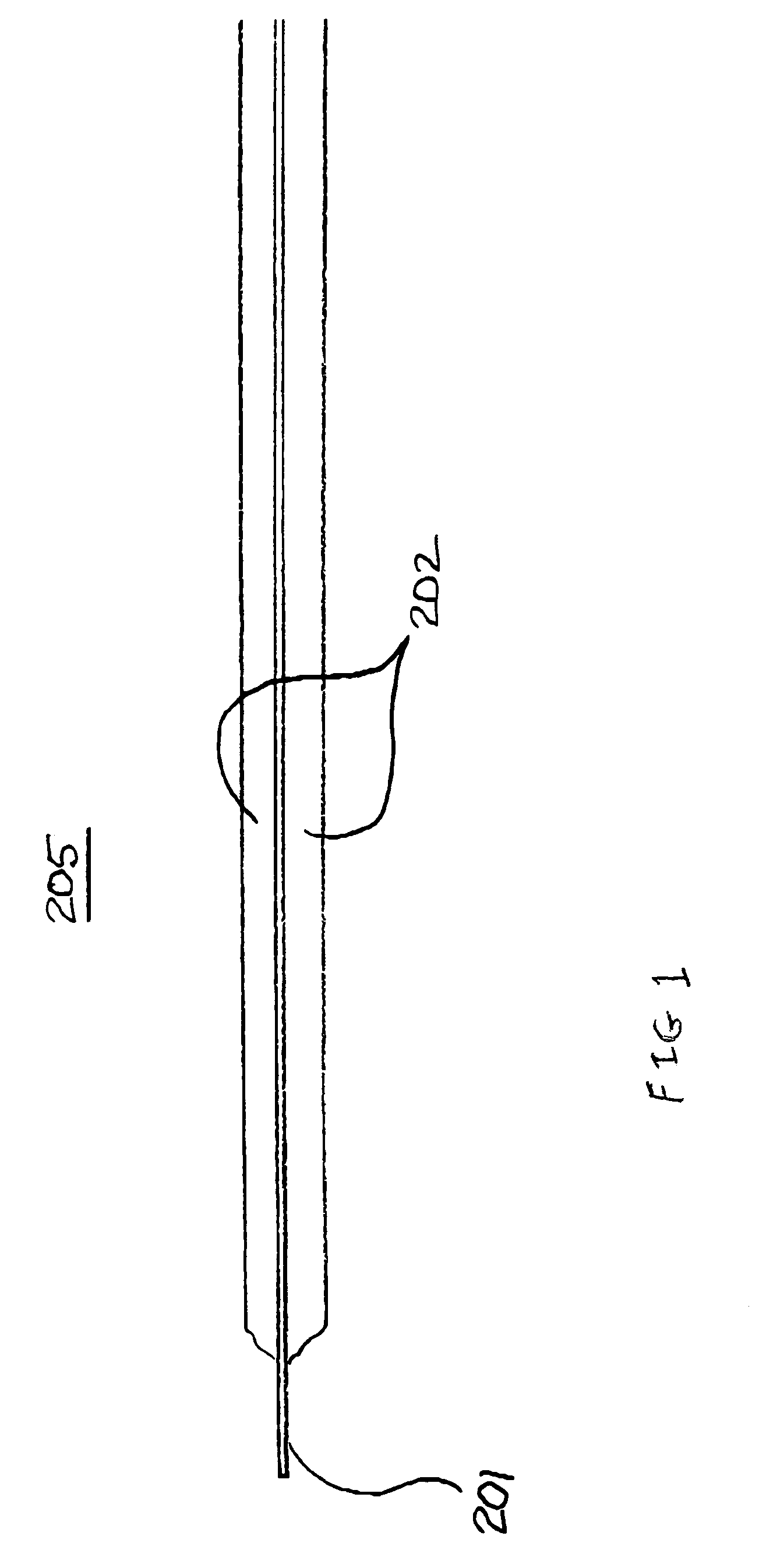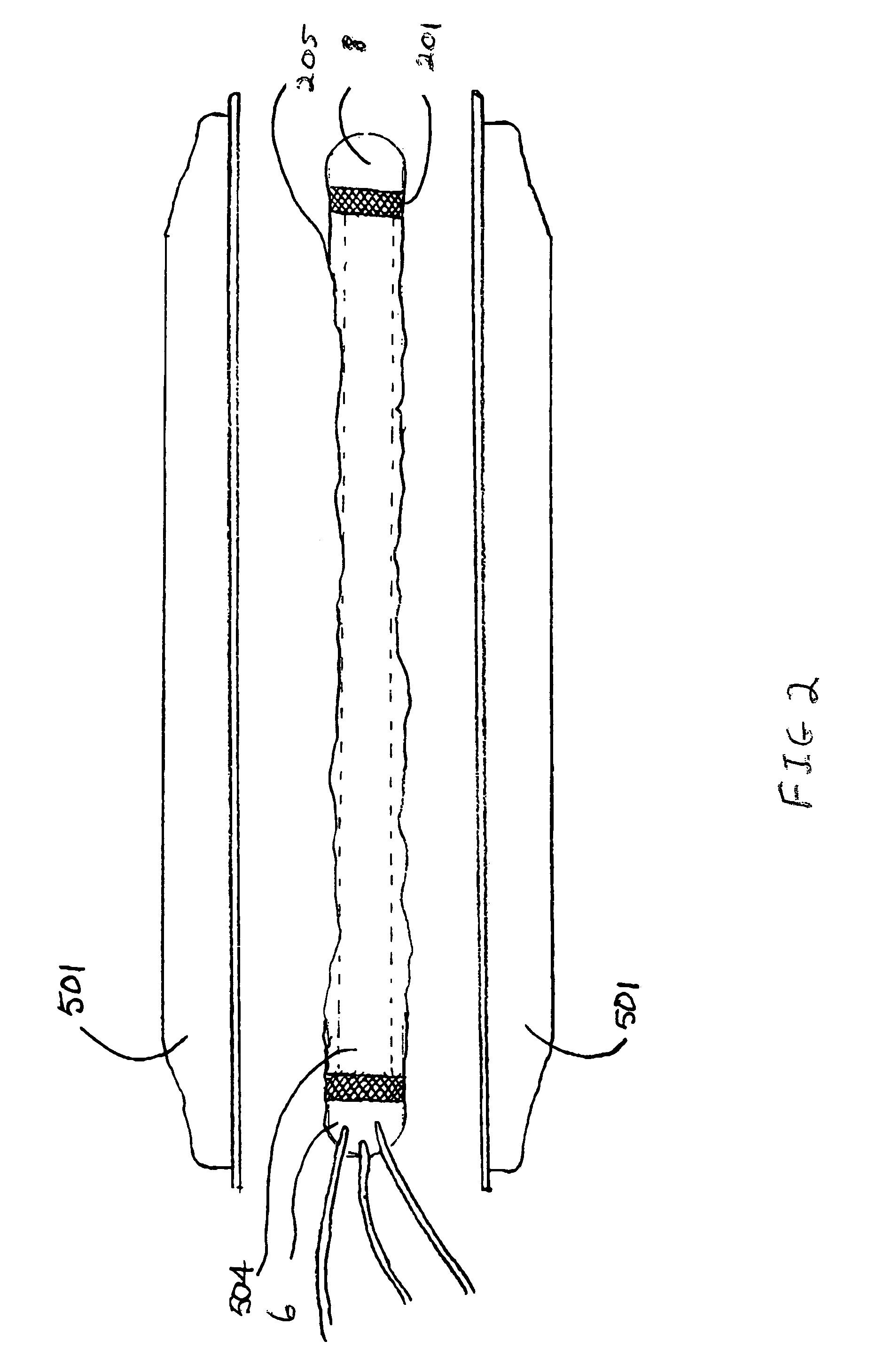Inflatable heating device for in-situ repair of conduit and method for repairing conduit
a heating device and inflatable technology, applied in the field of inflatable heating devices and the field of forming devices, can solve the problems of losing electrical continuity and heating capability, inferior curing of ambient materials, and limiting the flexibility of heaters through the use of wires such as wires, so as to reduce cycle time in production, inflatable heating, and prolong the life cycle
- Summary
- Abstract
- Description
- Claims
- Application Information
AI Technical Summary
Benefits of technology
Problems solved by technology
Method used
Image
Examples
Embodiment Construction
[0028]While this invention is susceptible of embodiments in many different forms, there is shown in the drawings and will herein be described in detail preferred embodiments of the invention with the understanding that the present disclosure is to be considered as an exemplification of the principles of the invention and is not intended to limit the broad aspect of the invention to the embodiments illustrated.
[0029]FIG. 1 cross-sectionally illustrates one embodiment of the composite 205 in accordance with the present invention. The composite 205 is inflatable or elastomeric, seamless, reinforced with structural braids 201, and for most applications generally cylindrical. The composite 205 is a single layer formed from one or more initially discrete layers that are consolidated by means of a thermoset resin 202. The resin 202 is preferably a silicone matrix such as methylvinylpolysiloxane, which will remain flexible after its application and cure. The core of the composite 205 contai...
PUM
| Property | Measurement | Unit |
|---|---|---|
| braid angle | aaaaa | aaaaa |
| angle | aaaaa | aaaaa |
| angle | aaaaa | aaaaa |
Abstract
Description
Claims
Application Information
 Login to View More
Login to View More - R&D
- Intellectual Property
- Life Sciences
- Materials
- Tech Scout
- Unparalleled Data Quality
- Higher Quality Content
- 60% Fewer Hallucinations
Browse by: Latest US Patents, China's latest patents, Technical Efficacy Thesaurus, Application Domain, Technology Topic, Popular Technical Reports.
© 2025 PatSnap. All rights reserved.Legal|Privacy policy|Modern Slavery Act Transparency Statement|Sitemap|About US| Contact US: help@patsnap.com



